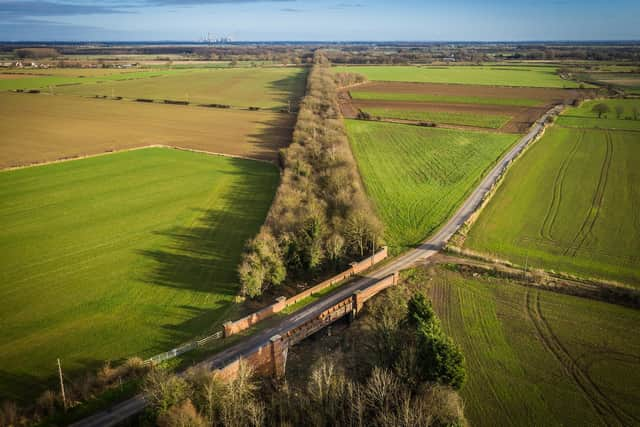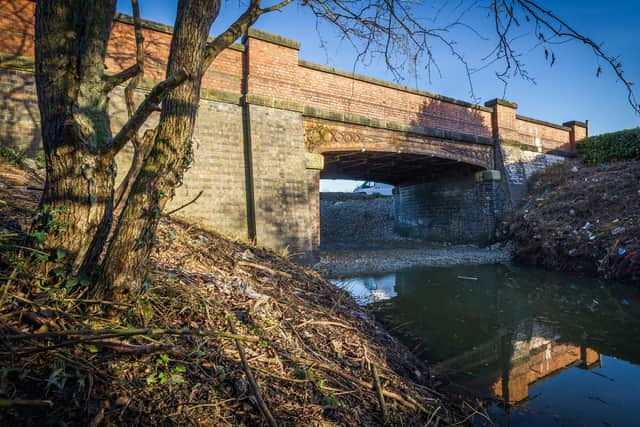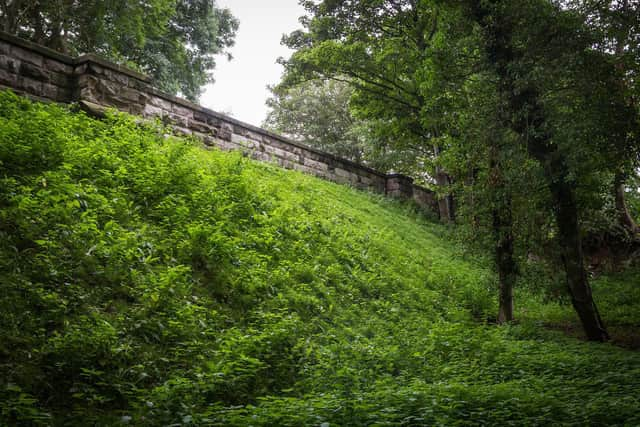The heritage railway enthusiasts campaigning to save Yorkshire's Victorian bridges from being infilled or demolished
The 10 members of the Heritage Railway Estate campaign group have now persuaded National Highways, formerly Highways England, to put projects across the country on hold in the hope that Victorian bridges on long-dismantled lines can be re-used in future active travel schemes.
They include two structures 1km apart in Little Smeaton, between Doncaster and Selby, that were once part of the industrial Hull to Barnsley route that transported coal between the pits of South Yorkshire and the Humber docks. There are currently plans to turn the former trackbed into a greenway for walkers and cyclists called the Coal to Coast.
Advertisement
Hide AdAdvertisement
Hide AdThe wildlife corridor beneath the road bridges where the sleepers once lay was threatened with infilling by concrete in order to reduce the liability risk and maintenance costs.


Three more bridges - one at Methley, near Castleford, which could link a new housing estate to the town, and a cast-iron feat of engineering at Sharlston, near Wakefield, as well as a bridge that once carried the Thirsk to Malton line through the picturesque village of Coxwold - were earmarked for similar cost-saving schemes.
Engineers have already infilled the old Harrogate to Church Fenton line trackbed underneath Rudgate Bridge near Tadcaster, despite Sustrans exploring the possibility of linking it with an existing cycle path over the old route as an extension.
Graeme Bickerdike and the other HRE group members first became aware of the large-scale plans to reduce the disused railway estate in 2020.
Advertisement
Hide AdAdvertisement
Hide Ad"Many of these bridges are tired and are not in great condition, but what National Highways did not do was to review the value of assets for future transport uses, including active travel and re-opening railways.


"Many of them also have ecological value too - around two-thirds of the bridges span dismantled railways that are viable wildlife corridors. Infilling them will prevent animals travelling along them."
Campaigning during the past two years has reduced the number of condemned bridges from 134 to 68, and National Highways has also agreed to pause all remaining schemes while their futures are assessed by experts.
"Although the Coal to Coast Greenway plans are ambitious, we need to be more ambitious for active travel and the culture needs to change. At Little Smeaton, the bridges are enormous engineering feats, and there are already detours and the A1 blocking the corridor. Creating more blockages on this route is not desirable and will add additional costs to any active travel schemes."


Advertisement
Hide AdAdvertisement
Hide AdThe HRE members now sit on a stakeholder advisory forum set up by National Highways, and the Department for Transport has agreed to commission a Sustrans study into active travel potential.
"The bridge at Sharlston is unlikely to re-open, but it's really unusual and a 19th-century asset that needs to be protected. The Rudgate Bridge was infilled under the radar when there was an aspiration to extend the cycle path under it. At Little Smeaton, around 10 metres of trees and vegetation has already been cut down during preparatory works.
"We need more appreciation of these structures as they tell compelling stories of the challenges people overcame to build them. They are part of our industrial history and monuments to ambition, tenacity and endeavour."
National Highways head of Historical Railways Estate programme Hélène Rossiter said:“Where it is safe to do so, we have paused infilling to provide more time for local authorities and other local groups to fully consider Historical Railway Structures as part of their local plans for walking, cycling and heritage railways.”
Comment Guidelines
National World encourages reader discussion on our stories. User feedback, insights and back-and-forth exchanges add a rich layer of context to reporting. Please review our Community Guidelines before commenting.
